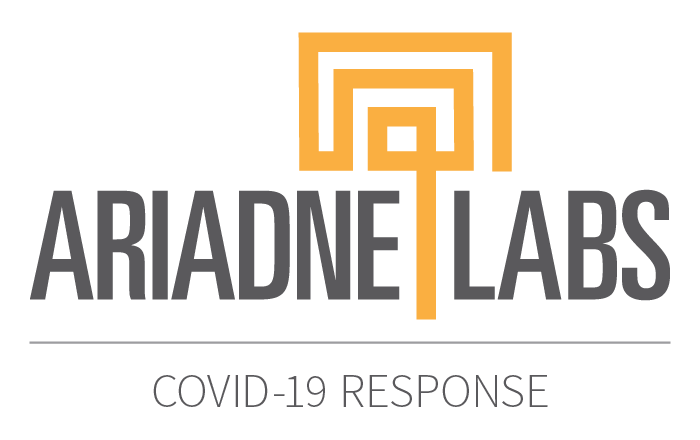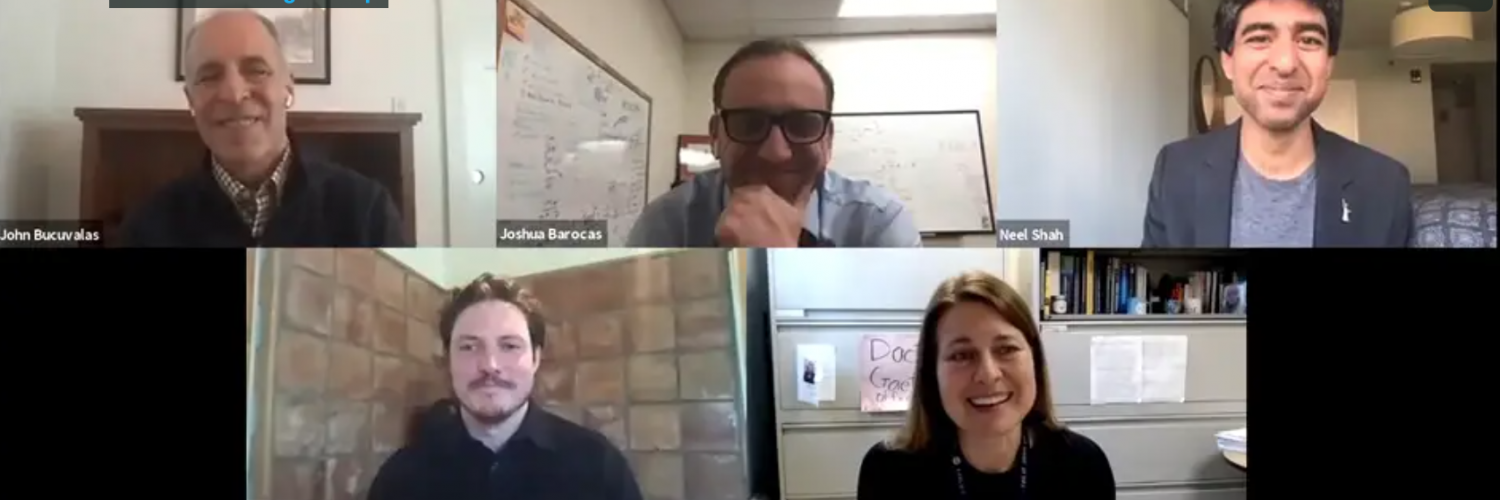In his opening remarks as moderator of a May 12 virtual roundtable on ways health care facilities can design better spaces to prevent the spread of COVID19, Neel Shah, MD, MPP, Director of the Delivery Decisions Initiative at Ariadne Labs, acknowledged that space was something that health care providers generally took for granted. But after meeting Michael Murphy, founding principal and Executive Director of MASS Design Group, Shah said he realized “Architecture is never neutral; it either can heal or it can hurt. That really resonated with me as someone who works in health systems innovation,” Shah said.
Ariadne Labs has joined forces with MASS Design, Mount Sinai and other partners to research and outline key spatial interventions that can mitigate infection risks among health care workers, patients, and communities.
Shah joined Murphy, Joshua Barocas, MD, Assistant Professor of Medicine, Boston University School of Medicine, John Bucuvalas, MD, Professor of Pediatrics, Mount Sinai, and Jessie M. Gaeta, MD, CMO Boston Health Care for the Homeless Program, to discuss ways in which the COVID-19 pandemic had affected health care spaces at Mount Sinai in New York and for the homeless in Boston. The roundtable, which can also be viewed here, was sponsored by Ariadne Labs, MASS Design and Mount Sinai, and drew about 600 participants.
The roundtable reviewed the circumstances that led to the quick installation of large treatment tents in Boston for homeless patients and the use of color coding at Mount Sinai to indicate risk levels of various spaces; this guided clinical staff on where to put on or take off protective gear, or even where to eat and relax.
Other key takeaways from the webinar included:
- Hospitals have been traditionally designed to fill as many beds as possible, but this is counterproductive in a pandemic. “Our system is built to generate money as opposed to health. We have to rethink that,” said Dr. Barocas.
- Systems that adequately handle quick surges in critical patients – like the rush of patients after the Boston Marathon bombing – don’t work as well with the slower but larger build-up of global pandemics. “One of the things we have learned is that hospitals are living systems. They are not fixed buildings that stay static,” Murphy said. Hospitals “are machines that must be tuned.”
- In the future, better hospital ventilation and cleaner air for citizens must be a priority. The recommendation for six feet of distance “is actually just a proxy for air flow,” Murphy said. “Time and exposure to the virus is what we should be focusing on, not just distance.”


